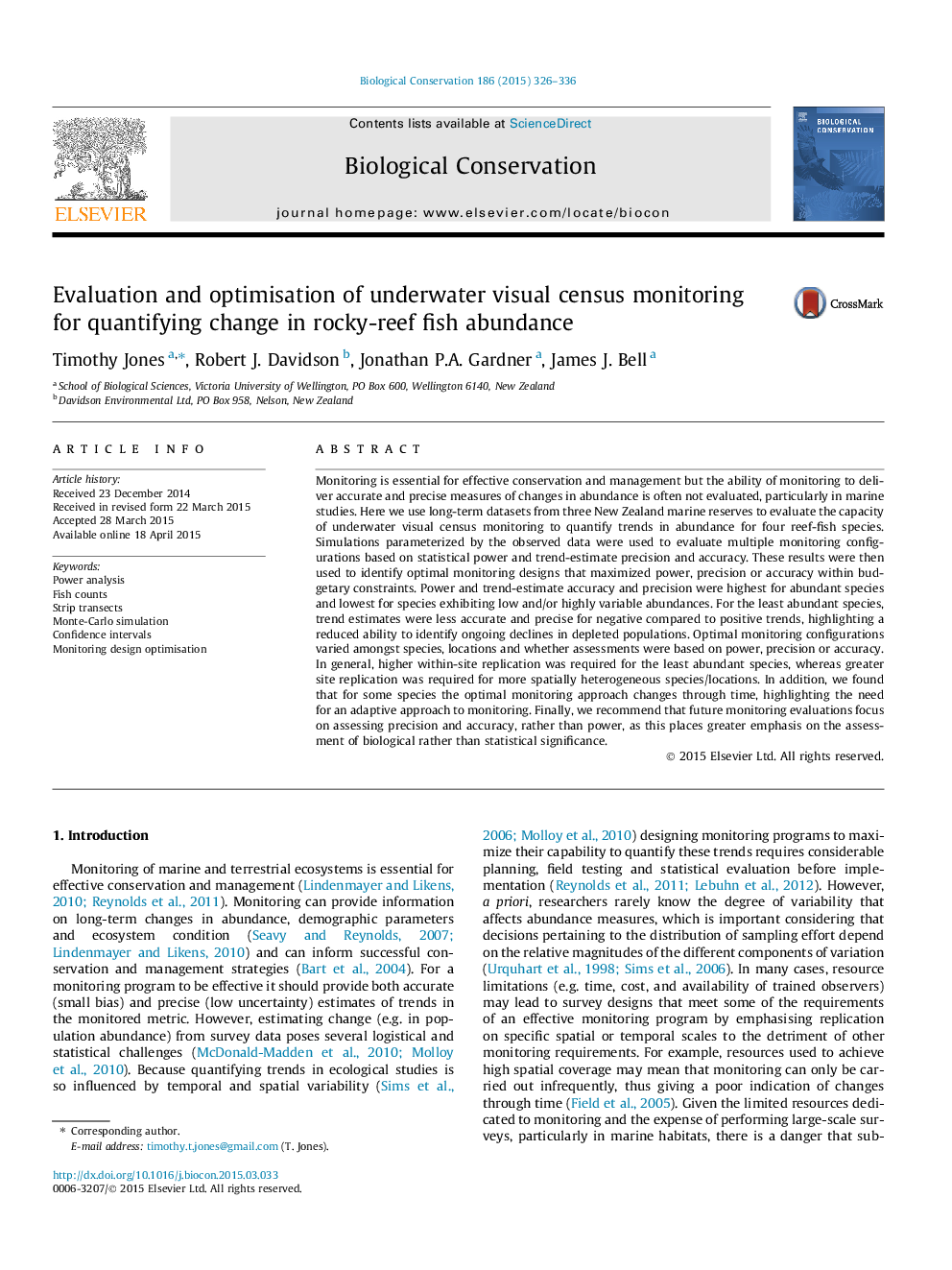| Article ID | Journal | Published Year | Pages | File Type |
|---|---|---|---|---|
| 6299739 | Biological Conservation | 2015 | 11 Pages |
Abstract
Monitoring is essential for effective conservation and management but the ability of monitoring to deliver accurate and precise measures of changes in abundance is often not evaluated, particularly in marine studies. Here we use long-term datasets from three New Zealand marine reserves to evaluate the capacity of underwater visual census monitoring to quantify trends in abundance for four reef-fish species. Simulations parameterized by the observed data were used to evaluate multiple monitoring configurations based on statistical power and trend-estimate precision and accuracy. These results were then used to identify optimal monitoring designs that maximized power, precision or accuracy within budgetary constraints. Power and trend-estimate accuracy and precision were highest for abundant species and lowest for species exhibiting low and/or highly variable abundances. For the least abundant species, trend estimates were less accurate and precise for negative compared to positive trends, highlighting a reduced ability to identify ongoing declines in depleted populations. Optimal monitoring configurations varied amongst species, locations and whether assessments were based on power, precision or accuracy. In general, higher within-site replication was required for the least abundant species, whereas greater site replication was required for more spatially heterogeneous species/locations. In addition, we found that for some species the optimal monitoring approach changes through time, highlighting the need for an adaptive approach to monitoring. Finally, we recommend that future monitoring evaluations focus on assessing precision and accuracy, rather than power, as this places greater emphasis on the assessment of biological rather than statistical significance.
Related Topics
Life Sciences
Agricultural and Biological Sciences
Ecology, Evolution, Behavior and Systematics
Authors
Timothy Jones, Robert J. Davidson, Jonathan P.A. Gardner, James J. Bell,
